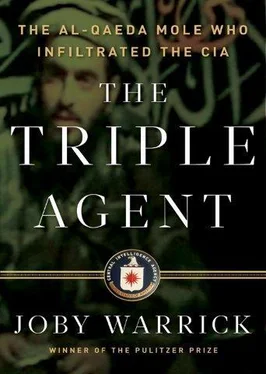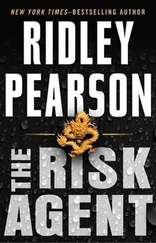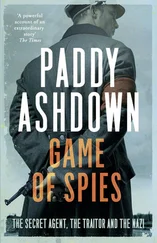It was already daylight in Pakistan, and one of the CIA’s Predators had been hovering nearby as Swedan left the girls’ school for an early appointment. As the CIA watched, Swedan met with a man he appeared to know, and the two traveled back to the girls’ school together. The second man’s face was obscured, but everything about him matched the description of the terrorist commander the CIA had been looking for. The duty officer at the Counterterrorism Center had made a judgment call and phoned Hayden for his consent. Permission to strike?
Hayden had a standard set of questions for situations such as this, and he proceeded to go through them.
How long have you watched this location?
What is the history of this location, and how many times have you looked at it?
Have you seen women and children in this compound, ever?
From its vantage point a half mile above the village, the lead Predator, which had followed the two men, had already locked its video tracking system on the girls’ school while awaiting further instructions. The odd-looking aircraft with its narrow fuselage and bowling alley–length wingspan cut lazy circles in the sky above the town, moving at speeds barely above those of freeway traffic. With a full tank and the usual complement of missiles, it could have continued to hover for fourteen hours without a pause. Instead, with a subtle shift in the engine’s pitch, the aircraft widened its arc to line up its body with the building below. In Langley, the live video feed flickered on a pair of flat-screen TVs in the operations center, while the aircraft’s two-man crew, in a separate building, made small adjustments to the aircraft’s movements with joysticks and the click of a computer mouse.
Hayden thought for a moment. Swedan was inside the building; that was certain. The man with Swedan was doubtlessly an accomplice and very possibly al-Kini himself. The building was a known training facility for al-Qaeda that probably contained explosives and was far enough from the village to ensure that no one else would be harmed. Three for the price of one, Hayden thought.
One or two of the Predator’s Hellfire missiles would probably do the job, but Hayden wanted to be doubly sure.
Use the GBU , he ordered. At the command, the Predator’s flight crew bypassed the aircraft’s fourteen-pound Hellfire missiles and switched on a far larger weapon hidden inside the bomb cavity, a five-hundred-pound laser-guided GBU-12 Paveway. The weapons officer checked the guidance system, made one last tweak, and pressed a button. He counted backward as the missile hurtled toward the village at a speed slightly faster than sound. Three, two, one, the operator called. And then: “Impact.”
The building in the black-and-white screen erupted in a massive fireball.
The drone lingered for hours, to record the recovery of two mangled corpses. A local Taliban official confirmed the deaths of the two men he called foreign fighters and “close friends.”
By then, the drone operators had ended their shift and climbed into their cars for the journey home, a commute made refreshingly easy by Washington standards because of the holiday.
Hayden sat on his bed to watch the last few minutes of the football game and then fell into a deep sleep. The next morning an intercepted phone call in Pakistan confirmed the death of Osama al-Kini, the last high-ranking al-Qaeda leader to be killed by orders of the Bush administration.
The whereabouts of the other Osama remained unknown.
Weeks later, Mike Hayden was officially out of a job. Newly elected President Barack Obama had opted for a fresh start by naming an old Washington hand, Leon Panetta, to run the CIA. Panetta had no significant intelligence experience but was a proven manager, having been chief of staff in the Clinton White House. One of his first decisions was to retain Hayden’s popular deputy, Steve Kappes, as the agency’s deputy director and to keep the agency’s entire counterterrorism team intact.
Hayden’s initial meeting with his successor was cordial, if occasionally awkward. Panetta had gotten off to a poor start inside the CIA by publicly criticizing the agency’s harsh treatment of al-Qaeda captives, some of whom had been locked in secret prisons and subjected to waterboarding, an interrogation tactic that mimics the sensation of drowning. Panetta testified in his confirmation hearing that he believed such techniques constituted torture, a criminal offense.
Hayden made a curt reference to the controversy. “You should never use ‘torture’ and ‘CIA’ in the same paragraph,” he advised dryly. But the retired general was mostly interested in talking about something else. Using notes he had written on an index card, he cautioned Panetta against being lulled into underestimating al-Qaeda. Although the terrorist group was being hammered in northwestern Pakistan by Predator strikes—a practice Obama had already heartily embraced—it remained capable of hitting Americans in ways that were both unexpected and potentially devastating. Just three months earlier, a Taliban-allied terrorist group from Pakistan had launched commando-style attacks on Mumbai, raking hotels, rail stations, and other buildings with automatic weapons and grenades, and killing more than 170 people.
Hayden now looked directly at Panetta. This was the important part.
“I don’t know if you understand this yet, but you are America’s combatant commander in the war against terrorism,” he said. More than the Pentagon, the FBI, or anyone else, Hayden continued, the CIA was responsible for hunting down terrorists in foreign countries and stopping them before they could strike. Other CIA directors had carried out similar missions in bygone years, but now the job was different: For the first time in the agency’s history, “stopping” the bad guys meant killing them.
“You will be making decisions,” Hayden said, “that will absolutely surprise you.”
Panetta listened politely, but Hayden’s final point struck him as a bit dramatic. At military posts, a change of command was often greeted with ceremonial flourish: boot clicks and salutes and theatrical rhetoric. It would be weeks before Panetta fully understood what Hayden meant.
On his way out, Hayden stopped by the White House for a final meeting with the newly elected president. In an Oval Office briefing with Barack Obama, the general mentioned a pair of targets the agency had been monitoring in northwestern Pakistan. Hayden had authorized a strike, and the agency’s team was waiting for the right moment, he told the president.
Later that morning, after the meeting had moved into the White House’s Situation Room, Hayden was asked about the Pakistani operation. What about those two targets?
Hayden made a quick call on his secure phone.
“Check,” he said, “and check.”
Hayden left the meeting a few minutes later amid appreciative smiles and handshakes.
They certainly seem supportive , he thought, appraising the young president and his security team with guarded approval.
He had officially passed the baton. Now it was their turn.
London—January 19, 2009
A winter squall was whipping through central London’s Grosvenor Square, scattering newspapers and tourists and pelting Franklin Roosevelt’s caped statue with sheets of rain. Jennifer Lynne Matthews peered from her office window into the thick weather, barely able to see.
It was another soggy Monday in London and the start of the final stretch of a nearly four-year stint as the CIA’s chief liaison on counterterrorism to Britain. Soon she would be on her way either back to Virginia or to an entirely different location—perhaps even Afghanistan—and the uncertainty was making her anxious. The morning’s cable traffic had brought unsettling news. The FBI was chasing a possible threat by Somali terrorists to blow up the inaugural parade for the newly elected president, Barack Obama, due to begin in less than twenty-four hours. In Afghanistan, insurgents had attempted an unusually sophisticated double suicide bombing just outside the CIA’s secret base near the city of Khost. First, a minivan was blown up at the front gate, killing and wounding mothers and young children who had been waiting in line to see the base doctor. As guards and troops rushed to help the wounded, a truck, sagging under the weight of a massive bomb, came barreling down the main highway. A few well-aimed gunshots by an Afghan soldier had killed the truck’s driver and averted a bigger disaster.
Читать дальше












